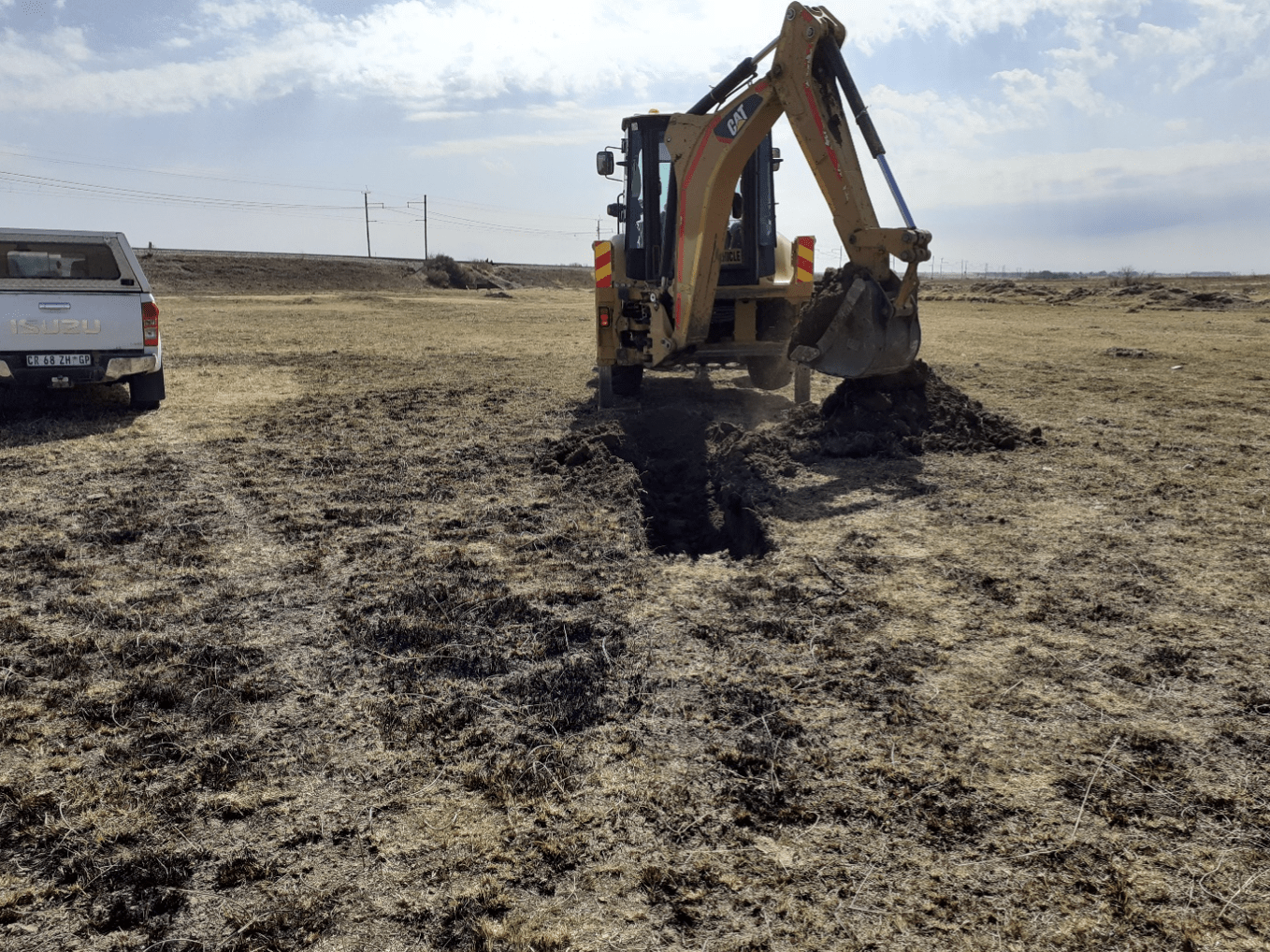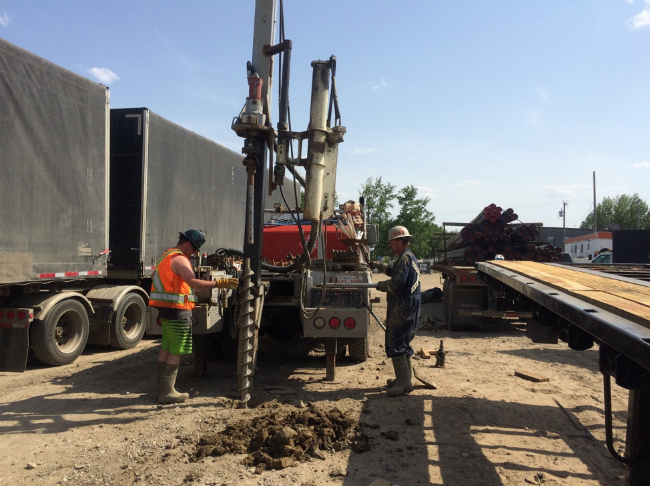Understanding the Principles: Regarding Geotechnical Engineering in Modern Construction
Understanding the Principles: Regarding Geotechnical Engineering in Modern Construction
Blog Article
A Comprehensive Summary of Geotechnical Engineering Techniques and Their Effect On Modern Civil Design Projects
Geotechnical engineering serves as the backbone of modern civil engineering, offering crucial strategies that resolve the intricacies of subsurface problems. The interaction of soil evaluation, foundation design, and innovative innovations forms the honesty and sustainability of infrastructure jobs.
Importance of Geotechnical Engineering
Geotechnical engineering works as a crucial structure for civil design jobs, influencing the safety and security and stability of frameworks. This self-control concentrates on the habits of dirt and rock products, providing crucial insights that lead the layout and construction processes. By recognizing the communication between the earth and engineered frameworks, geotechnical engineers can analyze risks linked with ground conditions, such as settlement, incline security, and liquefaction.
The value of geotechnical design extends beyond mere structural integrity; it plays a vital role in environmental management and sustainability. Correctly implemented geotechnical assessments make sure that tasks decrease their environmental footprint and comply with regulative demands (about geotechnical engineering). Geotechnical design is instrumental in site choice, enabling engineers to identify ideal locations for building that mitigate possible threats.
Additionally, geotechnical engineering cultivates innovation in civil design by advancing techniques for ground renovation, structure layout, and excavation. The self-control's contributions are crucial in addressing obstacles presented by differing dirt problems, therefore facilitating effective and secure framework development. Overall, the importance of geotechnical design is critical in ensuring that civil design projects are not only feasible however also resistant against manufactured and natural hardships.
Key Methods in Geotechnical Design

An additional necessary strategy is dirt stablizing, which includes modifying soil homes to boost load-bearing capacity or minimize settlement. Techniques such as adding cement, lime, or using geosynthetics are typically utilized to attain dirt improvement.
Ground renovation techniques, including dynamic compaction and vibro-replacement, are additionally essential. These techniques aim to densify loose or soft dirts, enhancing their strength and lowering liquefaction capacity in seismic areas.
Keeping structures, such as sheet heaps and dirt nailing, are utilized to sustain excavations and avoid dirt motion. Additionally, incline stablizing techniques, including water drainage systems and retaining wall surfaces, are vital for reducing landslide dangers.

Dirt Evaluation and Testing Approaches
Effective dirt analysis and testing methods are crucial for understanding the physical and chemical residential or commercial properties of dirt, which directly affect engineering choices. A comprehensive evaluation of soil qualities is necessary for anticipating habits under numerous loading problems and environmental influences.
Usual dirt screening techniques consist of both area and laboratory techniques. Area examinations, such as the Criterion Penetration Examination (SPT) and Cone Penetration Examination (CPT), provide immediate insights into soil toughness, stratification, and thickness. These tests help designers evaluate site conditions effectively prior to even more extensive laboratory analyses.
Lab screening approaches, such as Atterberg limitations, grain size distribution, and compaction examinations, are critical for determining soil plasticity, moisture content, and ideal compaction degrees. Moreover, advanced techniques like triaxial tests and combined undrained (CU) examinations provide useful data on shear toughness and reliable tension criteria - all about geotechnical engineering.
Chemical screening, including pH, electrical conductivity, and organic material analysis, is additionally important for understanding potential soil contamination and its influence on construction products. Jointly, these dirt analysis and screening methods develop the structure of notified decision-making in geotechnical design, making sure the security and that site stability of modern civil engineering jobs.
Foundation Layout Approaches
These strategies can be categorized into deep and shallow structures, each fit to details dirt problems and loading scenarios. Superficial foundations, such as spread grounds and floor covering structures, are typically utilized when surface dirts have appropriate bearing capability.
In contrast, deep foundations, consisting of heaps and drilled shafts, are used when surface soils are insufficient or weak for supporting the structure. These foundations transfer loads to deeper, a lot more stable dirt or rock layers, making them crucial for skyscrapers and bridges in challenging geotechnical conditions.
Selecting the ideal foundation design entails extensive geotechnical investigations, including soil composition, bearing capability, and groundwater problems. Furthermore, engineers need to think about elements such as negotiation, lateral tons, and possible seismic task to make sure the structure's efficiency gradually.
Ultimately, a well-executed structure style is a pivotal facet of civil design, directly affecting the security, durability, and capability of frameworks. all about geotechnical engineering. By straightening foundation types with site-specific conditions, designers can properly alleviate risks connected with structure failing
Developments Forming Civil Engineering

Lasting products, such as high-performance concrete and recycled aggregates, are also acquiring traction, promoting environmentally friendly techniques while maintaining structural stability. Furthermore, progressed geotechnical techniques, such as ground improvement and deep blending methods, are enhancing the security of foundations in challenging soil conditions.
Furthermore, using drones and remote sensing modern technology is enhancing website keeping an eye on and surveying, supplying real-time data that aids in managing check my reference construction development and safety and security. The implementation of innovative construction methods, such as premade and modular building and construction, better expedites job timelines and decreases Home Page waste. Collectively, these technologies are not only transforming civil engineering practices but additionally ensuring that modern framework meets the demands of an expanding worldwide population while attending to environmental worries.
Verdict
In conclusion, geotechnical engineering strategies are essential to the success of modern-day civil design projects. By using these methods, engineers can minimize risks and contribute to the growth of resilient urban settings, ultimately promoting sustainable growth and safety and security in civil design practices.
Geotechnical design serves as the backbone of modern civil engineering, supplying crucial strategies that deal with the intricacies of subsurface conditions.Geotechnical design serves as an essential foundation for civil design tasks, affecting the safety and security and stability of structures.In addition, geotechnical engineering fosters advancement in civil design by advancing strategies for ground renovation, foundation design, and excavation. Generally, the value of geotechnical design is extremely important in making certain that civil engineering jobs are not only viable however also resistant against man-made and natural difficulties.
In verdict, geotechnical engineering methods are integral to the success of modern-day civil engineering projects.
Report this page